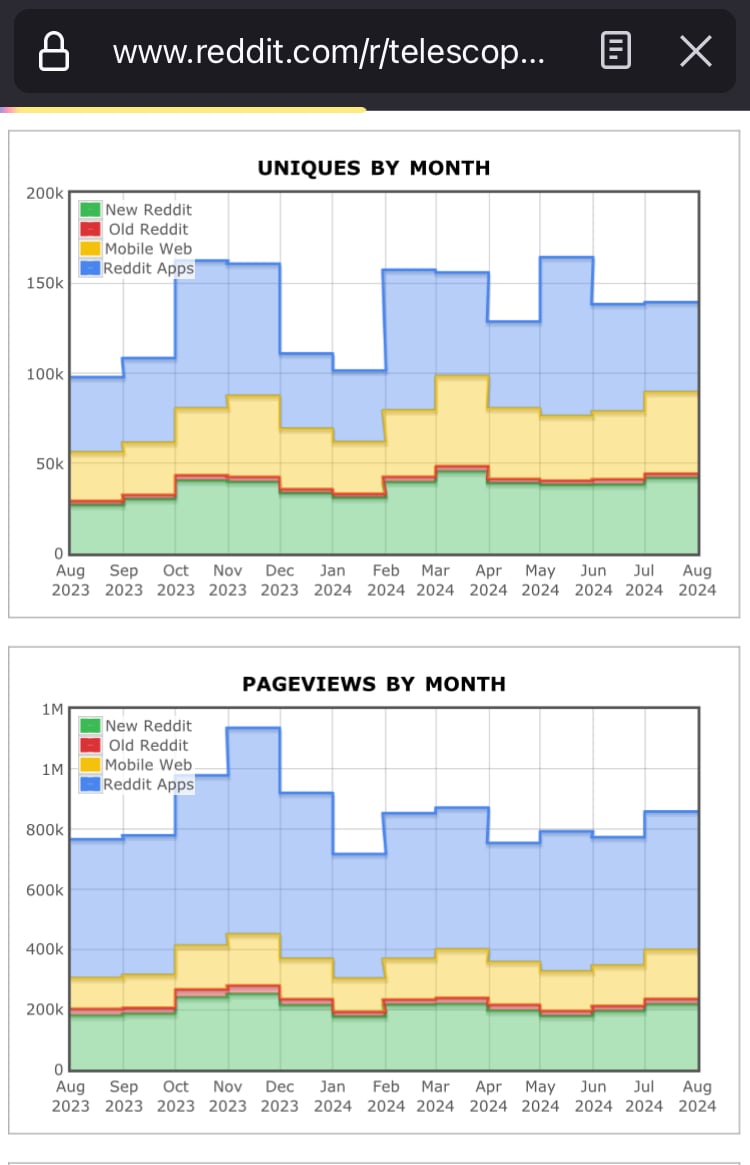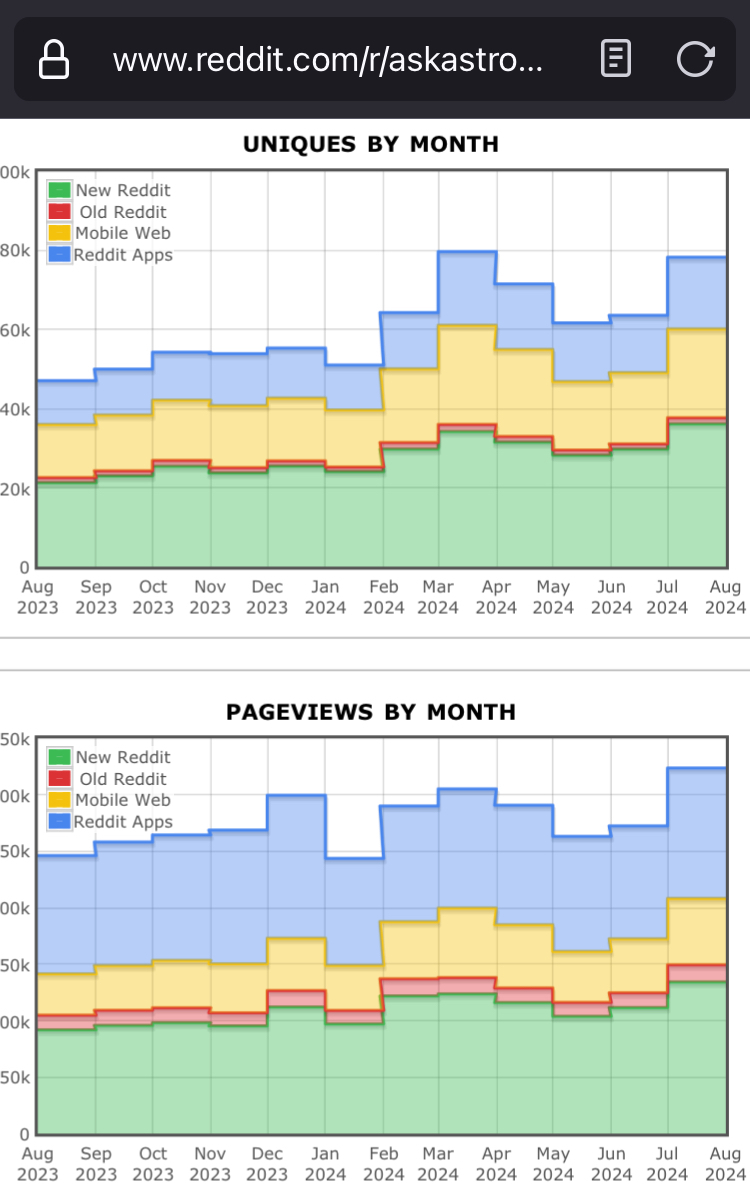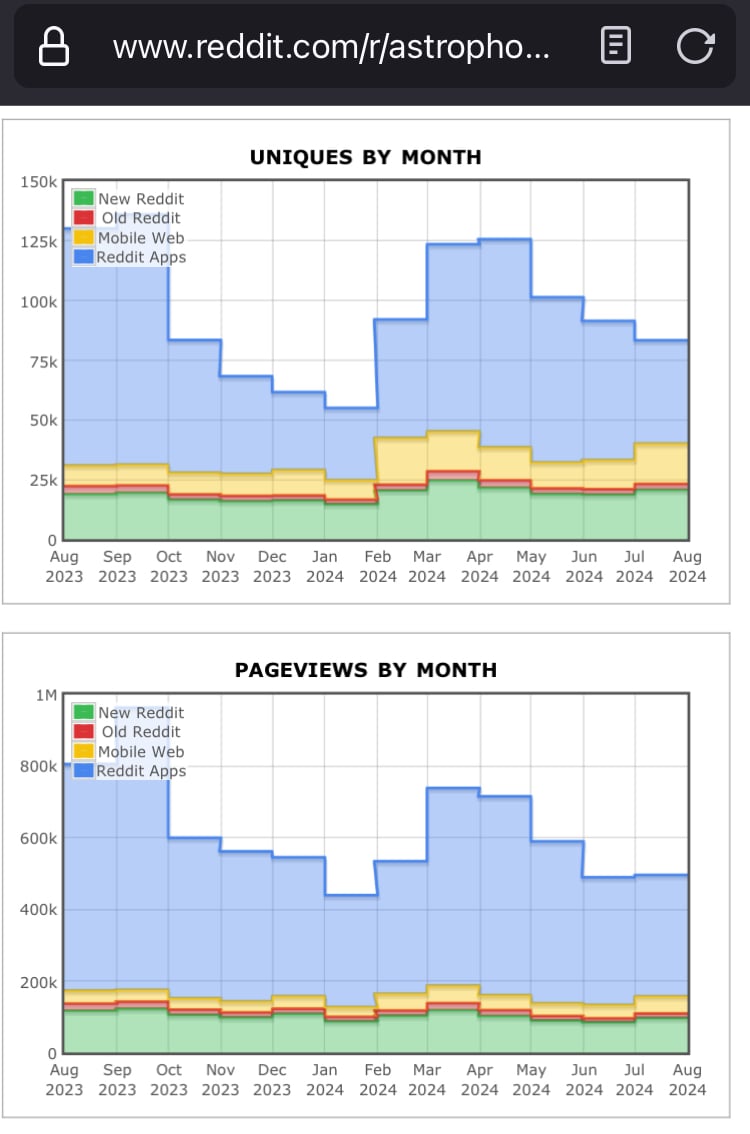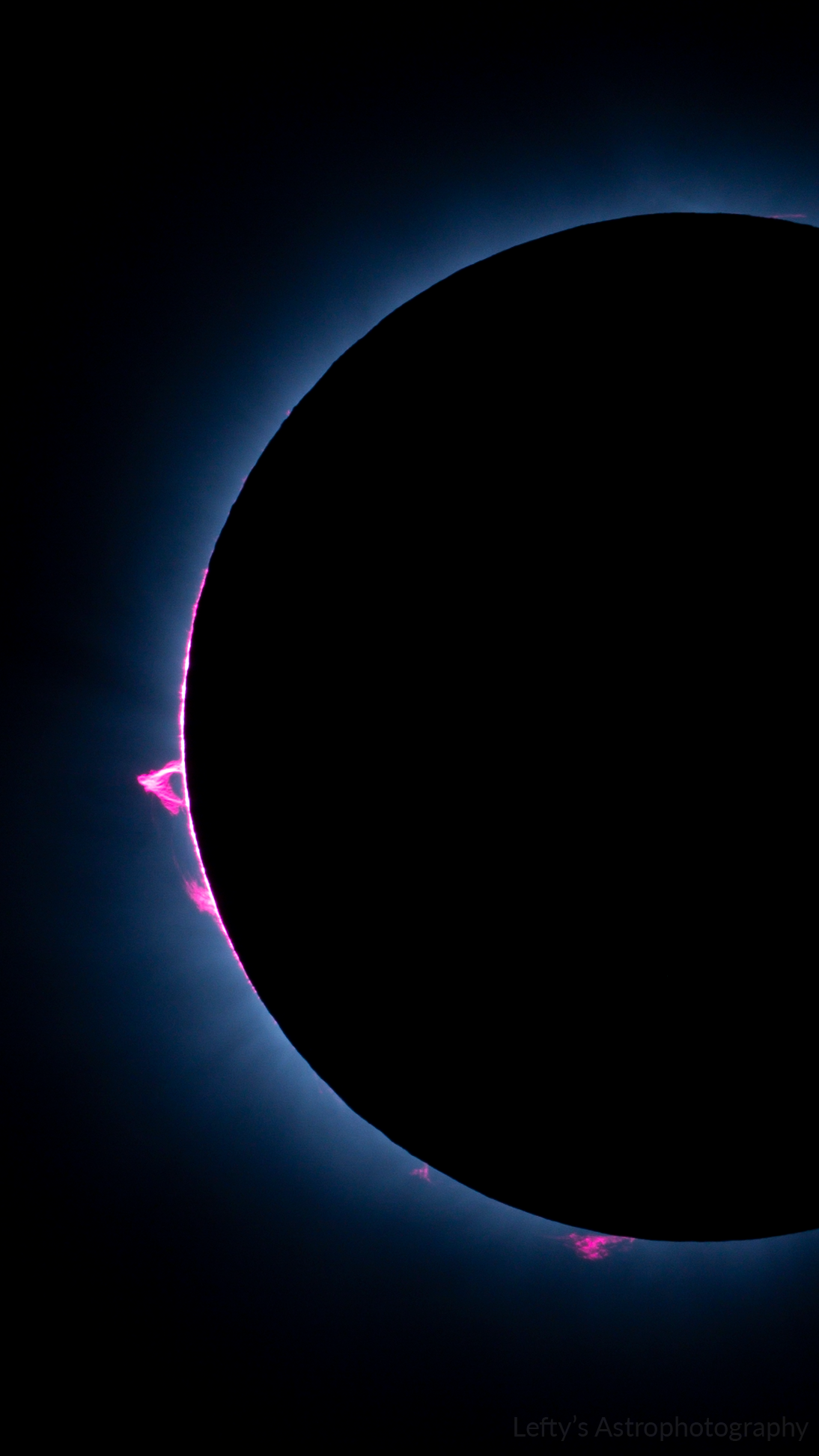NGC 4490 is a galaxy colliding with the smaller NGC 4485 galaxy, and both are about 25 million light years away. This image was taken with a monochrome camera through filters for luminance (all visible light), red, green, blue, and Hydrogen-alpha (656nm), which were combined into a color image. The Hydrogen-alpha was combined with red (described below) to make the HaLRGB image. The pink Ha regions are star forming nebulae within the galaxies. This got cropped out of the final pic, but I ended getting some gorgeous diffraction spikes on this star near the edge of the full FOV
Places where I host my other images:
-
TPO 6" F/4 Imaging Newtonian
-
Orion Sirius EQ-G
-
ZWO ASI1600MM-Pro
-
Skywatcher Quattro Coma Corrector
-
ZWO EFW 8x1.25"/31mm
-
Astronomik LRGB+CLS Filters- 31mm
-
Astrodon 31mm Ha 5nm, Oiii 3nm, Sii 5nm
-
Agena 50mm Deluxe Straight-Through Guide Scope
-
ZWO ASI-120MC for guiding
-
Moonlite Autofocuser
Acquisition: 27 hours 37 minutes (Camera at half Unity Gain, -15°C)
-
Ha - 128x360"
-
Lum - 464x60"
-
Red - 152x60"
-
Green - 150x60"
-
Blue - 123x60"
-
Flats- 30 per filter
-
24 JimmyFlats per broadband filter
Capture Software:
- Captured using N.I.N.A.
PixInsight Processing:
-
BatchPreProcessing (with premade JimmyFlats)
-
StarAlignment
-
ImageIntegration
-
DrizzleIntegration (2x, Var β=1.5)
-
DynamicCrop
-
DynamicBackgroundExtraction
duplicated each image and removed stars via StarXterminator. Ran DBE to generate background model. model subtracted from original pic using the following PixelMath (math courtesy of /u/jimmythechicken1)
$T * med(model) / model
Luminance:
-
BlurXTerminator
-
ArcsinhStretch + histogramtransformation to bring nonlinear
RGB:
-
ChannelCombinaiton to combine monochrome R, G, B stacks into color image
-
SpectroPhotometricColorCalibration
-
BlurXTerminator (correct only mode)
-
HSV Repair
making clean Ha
loosely following this guide
This basically subtracts any broadband signal from the Ha pic, leaving only the Ha emission, which is then combined in with the red and a little bit of the blue channels
- PixelMath to isolate just Ha
Ha-Q * (Red-med (Red)), Q=0.75
- PixelMath to add Ha into RGB image
Red = $T+B*(Ha_Clean - med(Ha_Clean))
Green = $T
Blue = $T+B0.2(Ha_Clean - med(Ha_Clean))
B variable = 0.6 (this controls how strongly the Ha is added)
Nonlinear
-
ArcsinhStretch + histogramtransformation to bring HaRGB image nonlinear
-
MLT for large scale chrominance noise reduction
-
shitloads of curve transformations to adjust lightness, contrast, saturation, etc (with various luminance and star masks)
-
slight SCNR to remove some greens
-
LRGBCombination with stretched Luminance
-
DeepSNR
-
more curves
-
ColorSaturation to slightly desaturate the Ha regions (they were very pink compared to the rest of the galaxy
-
slight noisexterminator
-
LocalHistogramEqualization
-
even more curves
-
Resample to 75%
-
DynamicCrop onto just the galaxy
-
annotation














Some nice colors in the sky If you’re north enough. Sadly I doubt this will be as strong as the aurora back in May, but maybe one day well get them down in Atlanta again